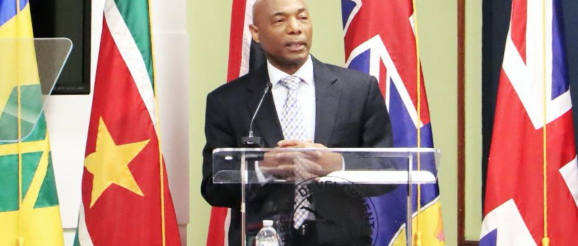CDB: Innovation, data, doubled lending needed to halve poverty – Barbados Today

Greater investment in innovation and data-driven analysis will be needed to fuel post-COVID social and economic recovery that could also cut poverty in half in the Caribbean, CARICOM’s key lending institution said Wednesday.
But the Caribbean Development Bank (CDB), led by Dr Hyginus Gene Leon, has estimated that the Bridgetown-based financial institution will have to double its lending in order to halve poverty in the region over the rest of the decade, requiring the bank to ratchet up support to help countries achieve this and other developmental goals.
Dr Leon outlined the plan on Wednesday during a near one-hour maiden speech as president, as the CDB opened its 51st annual meeting of the Board of Governors. The theme was Innovation, Transformation and Sustainable Development.
He disclosed that preliminary estimates suggested that in order to halve poverty in the region by 2030, the bank would have to double its average lending.
“The bank will need a strong focus on innovation to build resilience in implementation capacity in borrowing member countries. This will not only accelerate the pace of development, it will also increase the effectiveness of every dollar loaned or granted. So institutional strengthening and adherence to the highest governance standards would be another area of focus,” said Dr Leon.
Proposing the establishment of a “data hub” at the CDB, he said the Caribbean needed to improve on data gathering and analysis in order to better measure and implement targets.
Dr Leon declared: “Could we not be the go-to portal on regional data? Could we not design and build a distance to Sustainable Development Goal tracker that updates not only implementation but associated measures of distances to benchmarks, quantum of financing needs, and estimates of concessionary terms that could facilitate more rapid reductions in these distance metrics?
“Could we not extend this to a resilience tracker that informs on various dimensions of resilience and therefore our ability to recover or sustain a growth momentum?”
Stressing the need for innovation to build resilience, he said the pace and state of development in the region were rooted in its low resilience to several challenges including external economic shocks and natural hazards.
The CDB chief added that it will take innovation to eliminate poverty, advance standards of living and deliver equitable prosperity for residents of the Caribbean.
He recommended a “knowledge accumulation, innovation diagnostics and strategies” approach in three phases, to “operationalise innovation”.
“As an illustration, application of knowledge accumulation, which is the gathering, organising, refining and disseminating of information, that principle can be used to spawn products and industries in searching, scanning, classification, and archiving technologies and products,” he said.
“Second, innovation diagnostics, which fosters discovery by establishing a synthesis of success factors from the accumulated knowledge, can be used through partnerships with tertiary institutions – regional and globally – to promote centres of excellence and integrate knowledge tourism.
“We can then mould strategies, which transform the synthesised knowledge that we have, to create and market-specific viable business propositions . . . that now can be implemented at home, regionally, or globally.”
He noted that innovation within the financial institution would also be critical to its efforts to better assist its 19 borrowing member states.
“The bank will have to continue to play a role in mobilising finance to upgrade the infrastructure and institutions that are important in improving competitiveness and productivity, increasing innovation and resilience, driving growth, and achieving the Sustainable Development Goals,” he said.
Turning his attention to the role of the CDB in helping to promote and sustain innovation and transformation in the Caribbean, Dr Leon said: “Our current task is to systematically take stock of where we are with respect to the SDGs and assess the level of effort that it will take to get us there.
“This requires a number of things. First, we must properly map the theory of change between those goals and the activities and outputs. Second, we must establish the volume of spending that is required on these activities and outputs.
“Third, we must map the development financing matrix that will get us to these outputs and activities. Fourth, we must determine the level of resources that the CDB must mobilise as part of this effort. And finally, we must determine how we go about mobilising these resources.” ([email protected])
Read our ePaper. Fast. Factual. Free.
Sign up and stay up to date with Barbados’ FREE latest news.
